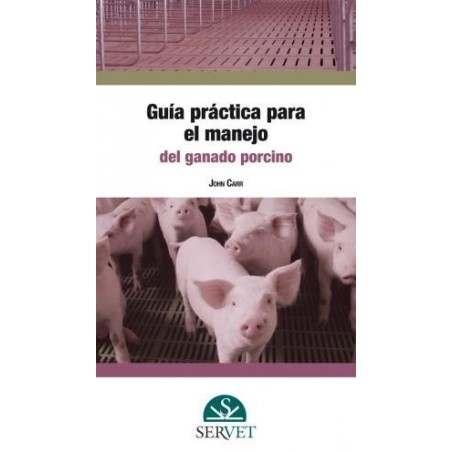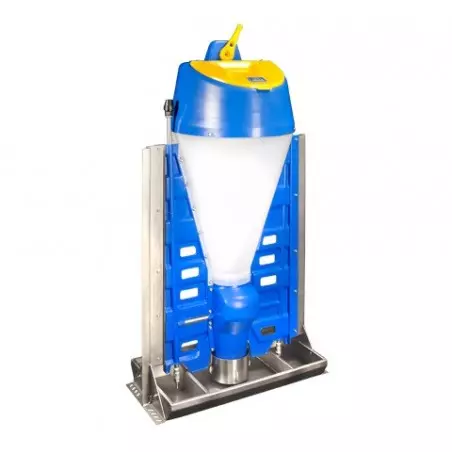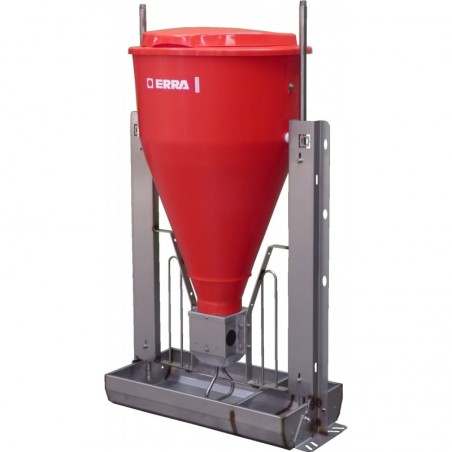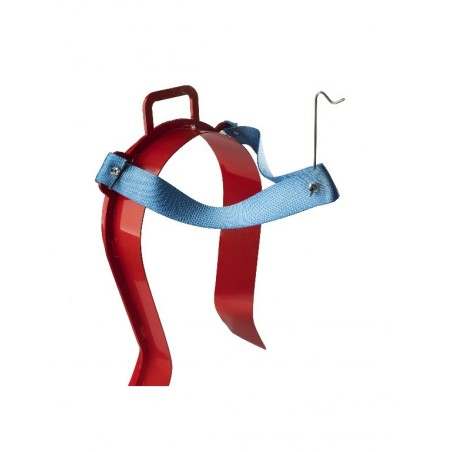Sánchez-Osorio shares which aspects of management are essential for maximizing the TN70's potential.
Firstly, he tells us that apart from the extensive management and nutrition manuals, there is also a smaller version in the form of advice and practical information (tips). More recently, there is also an app available for any cell phone, with basic management and feeding recommendations for the TN70.

Sánchez-Osorio emphasizes that the selection of future breeding sows begins even before they are born. It is important that the dam's body condition at weaning is good because this will influence estrus in the following cycle and the quality of the oocytes and embryos, with the consequent impact on the quality of the piglet born.
Gilt development
He also stresses the importance of the future breeding sow's growth phase. Although this phase depends increasingly less on the genetics supplier, as many customers produce their own replacement gilts, it is important that they follow Topigs Norsvin's recommendations for feeding future breeding sows.
Good selection of piglets from birth is essential. Only vital piglets with good birth weights and at least 14 teats (for TN70s this target can be 16) should be identified as potential future breeding gilts.
TN70 replacement gilts develop and grow fast, are lean, and have a good appetite. Recommended weight curves and feeding strategies take this into account and prevent too rapid growth in the juvenile phase (25 to 55 kg). We recommend that gilts during their development must be fed ad libitum, but in a controlled way, by reducing dietary energy and feeding in three phases. The first two phases (25-55 kg and 55-100 kg) aim to ensure adequate body and skeletal development. In the third phase, we aim to prepare the sow for her first gestation. If providing three phases is not an option, our nutritionists can recommend intermediate solutions adapted to the conditions of each farm.
Weight at first service
The target weight at mating is 150-160 kg, at around 240 days of age (220-240). The importance of the age/weight relationship is emphasized, which will not be the same in all conditions. The goal should be to achieve a growth of 650g/day from birth to mating. The age at first service should be contingent on reaching the minimum weight mentioned and ensuring that it is at least the second or third heat.
Sánchez-Osorio adds that it wouldn't be enough to know the weight at first service, but ideally, the weight at first farrowing and first weaning should be monitored, as the sow's development during this first parity has a direct impact on the sow's longevity.
Management at first service
It is recommended that boar exposure begin at 5-6 months. It has been observed that this early exposure favors greater uterine development and better performance throughout her reproductive life.
Regarding mating, there are no significant differences with respect to other hybrids: Mating at the second or third estrus, the TN70 sow stands out for showing clear signs of ouestrus.
Crate acclimation should be done for a minimum of 15 days, and it is also recommended to do a specific flushing during the previous 15 days. If it is not possible to have a specific diet, at least give an extra supply of dextrose and ensure a high feed intake during this phase.
Feeding curve
In gestation, it is essential to ensure that the sow continues her natural body development in addition to supporting the development of gestation. Sánchez-Osorio tells us that if possible, two different feeds should be used in gestation, one for early and mid-gestation and another for late gestation. The purpose of the feed for the first phase of gestation is to recover body condition. The feed for the second phase is to favor fetal development in order to improve birth weight. If implementing the two diets is complicated, just one gestation diet can be used but it has to be balanced to stimulate weight gain by gestation in the youngest females and, at the same time, to control the body weight of higher parity sows.
In weaned sows, nutritional needs are higher at the beginning of gestation and again at the end of gestation, when fetal growth and mammary development are at their peak. In gilts, requirements follow an upward curve throughout gestation to support the sow's body development (Table 1).
Table 1. Evolution of lysine and energy requirements during gestation according to parity number.
| Parity | Days gestation | Net energy, MJ/d | Lysine SID, g/d | Lis/NE, g/MJ |
|---|---|---|---|---|
| 1 | 0-35 | 19.7 | 11.3 | 0.57 |
| 35-38 | 21.4 | 13.4 | 0.63 | |
| 85-110 | 26.4 | 17.9 | 0.68 | |
| 2 | 0-35 | 25.8 | 14.2 | 0.55 |
| 35-38 | 22.5 | 9.2 | 0.41 | |
| 85-110 | 27.0 | 14.1 | 0.52 | |
| 3 | 0-35 | 26.3 | 12.4 | 0.47 |
| 35-38 | 22.7 | 7.7 | 0.34 | |
| 85-110 | 27.6 | 13.4 | 0.49 | |
| ≥ 4 | 0-35 | 25.9 | 7.9 | 0.31 |
| 35-38 | 23.4 | 6.8 | 0.29 | |
| 85-110 | 28.8 | 13.3 | 0.46 |
Once in the farrowing room, it would be ideal to give a peripartum feed from the entry into the room until the second or third day after farrowing. The advantage of a transition diet is that the amount of feed can be increased before farrowing without having any negative effect on udder development and the onset of milk production, preventing constipation and keeping them calm. Another aspect to watch out for is that there is continuity in the composition of the gestation and lactation diets.

In lactation, body condition losses should be less than 10% of body weight. After farrowing, a gradual, slow increase is chosen. The aim is to avoid overfeeding the sow by trying to increase too fast, which would have the opposite effect. The priority is that starting the 8th-9th day, the feed intake should be the maximum requested by the sow.
Table 2. Recommended feeding curves with lactation feeds following Topigs Norsvin nutritional recommendations.
| Days | Wheat-barley-soy | |
|---|---|---|
| Gilts | Sows | |
| 0 | 2.0 | 2.5 |
| 1 | 2.3 | 3.0 |
| 2 | 2.8 | 3.5 |
| 3 | 3.3 | 4.0 |
| 4 | 3.8 | 4.5 |
| 5 | 4.3 | 5.0 |
| 6 | 4.3 | 5.0 |
| 7 | 4.8 | 5.5 |
| 8 | 5.3 | 6.0 |
| > 8 | Ad libitum | Ad libitum |
Farrowing management
Sánchez-Osorio refers us to the previous article on the TN70 selection criteria. As he explained there, Topigs Norsvin has sought to ensure that any increase in total born is accompanied by an increase in born alive and an increase in the number of teats. According to him, this explains why the TN70 does not require very specific management regarding farrowing assistance or cross-fostering as it is a sow with good management and high milk capacity.
In farms with good conditions, the production objective should be between 15-16 born alive and 13-14 piglets weaned per sow.
This sow can work with lactations between 21 and 28 days and can obtain weaning weights close to or above 7 kg at 28 days.








